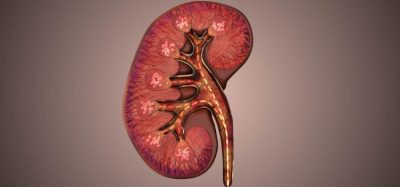Recruitment complete for Trajenta® (linagliptin) cardiovascular outcome study in patients with Type 2 Diabetes
Posted: 8 November 2012 | | No comments yet
Boehringer Ingelheim and Eli Lilly and Company are pleased to announce that the recruitment of patients for CAROLINA (Cardiovascular Outcome Study of Linagliptin versus Glimepiride in Patients with Type 2 Diabetes)1 has been completed. Linagliptin is currently the only DPP-4 inhibitor that is being compared to an active comparator in a long-term prospective cardiovascular (CV) outcome study.
“The impact of diabetes treatment options on CV complications is not well understood. This poor understanding poses a challenge for treating physicians given the high level of cardiovascular co-morbidity in Type 2 Diabetes patients,” said Prof. Klaus Dugi, Corporate Senior Vice President Medicine, Boehringer Ingelheim. “CAROLINA will close the scientific gap in our understanding of long-term cardiovascular outcomes with linagliptin and glimepiride. This study illustrates our commitment to provide a strong scientific foundation for the best treatment options.”
The study includes over 6,000 patients in 43 countries at more than 670 sites across the globe. The aim of the study is to investigate and compare the long term impact of treatment with linagliptin and glimepiride on CV morbidity and mortality over a period of about 6–7 years.1 In addition, the study will compare secondary measures of efficacy with regard to lowering blood glucose as well as safety parameters, including body weight and the incidence of hypoglycaemia.1 A prior study compared linagliptin with glimepiride with the primary objective to evaluate the respective glucose-lowering efficacy of both compounds after two years of treatment. The study demonstrated similar glucose-lowering with both treatments, but linagliptin was associated with less hypoglycaemia and less weight gain compared to glimepiride. However, this prior study was not designed to thoroughly assess CV effects of both treatments.2
The primary endpoint of CAROLINA will be time to the first occurrence of either: CV death, non-fatal myocardial infarction, non-fatal stroke or hospitalisation for unstable angina pectoris.1 The study is expected to complete in 2018.
The US Food and Drug Administration (FDA), European Medicines Agency (EMA) and other regulatory authorities worldwide approved linagliptin for the treatment of adult patients with Type 2 Diabetes as monotherapy or in combination with metformin, as add-on therapy to insulin, with sulphonylurea and with pioglitazone and with metformin plus sulphonylurea (these last two combinations have only been approved by the FDA in the United States).3,4 With linagliptin, no dose adjustment is required regardless of declining renal function or hepatic impairment*.3
About CAROLINA Study Design1
CAROLINA evaluates the CV safety of linagliptin in comparison to glimepiride in patients with Type 2 Diabetes and at increased CV risk.
Inclusion criteria include at least one of the following:
- Previous vascular complications
- Evidence of end organ damage such as albuminuria
- Age >70 years
- Two or more specified traditional CV risk factors
Patients are predominantly on metformin background therapy, but the protocol also allows for patients with contraindications to metformin, e.g., due to renal impairment. Linagliptin 5 mg is being compared to glimepiride 1–4 mg in 6,000 patients with a 6–7 year follow-up.
About Linagliptin
Linagliptin (5 mg, once daily) is marketed in Europe as Trajenta® (linagliptin) and in the U.S. as Tradjenta® (linagliptin), as a once-daily tablet that is used along with diet and exercise to improve glycaemic control in adults with Type 2 Diabetes. Linagliptin should not be used in patients with Type 1 Diabetes or for the treatment of diabetic ketoacidosis (increased ketones in the blood or urine). With linagliptin, no dose adjustment is required regardless of declining renal function or hepatic impairment.3
About Diabetes
An estimated 366 million people worldwide have Type 1 and Type 2 Diabetes.5 Type 2 Diabetes is the most common type, accounting for an estimated 90% of all diabetes cases.6 Diabetes is a chronic disease that occurs when the body either does not properly produce, or use, the hormone insulin.7
References
- Rosenstock. American Diabetes Association, 71st Scientific Sessions, San Diego, CA, 1103-P; NCT01243424. 2011.
- Gallwitz B, Rosenstock J, Rauch T, Bhattacharya S, Patel S, von Eynatten M, et al. 2-year efficacy and safety of linagliptin compared with glimepiride in patients with type 2 diabetes inadequately controlled on metformin: a randomised, double-blind, non-inferiority trial. Lancet. 2012; 380(9840): 475-83.
- Brown JB, Nichols GA, Perry A. The burden of treatment failure in type 2 diabetes. Diabetes Care. 2004; 27(7): 1535-40.
- Jentadueto™ (linagliptin/metformin HCI) tablets. Highlights of Prescribing Information. Initial US Approval: 2012.
- International Diabetes Federation. The Global Burden. IDF Diabetes Atlas (5th Edition); 2011.
- World Health Organization. Fact Sheet No. 312 What Is Diabetes? Available from: www.who.int/mediacentre/factsheets/fs312/en/print.html
- International Diabetes Federation. What is diabetes? . IDF Diabetes Atlas (5th Edition) 2011.









